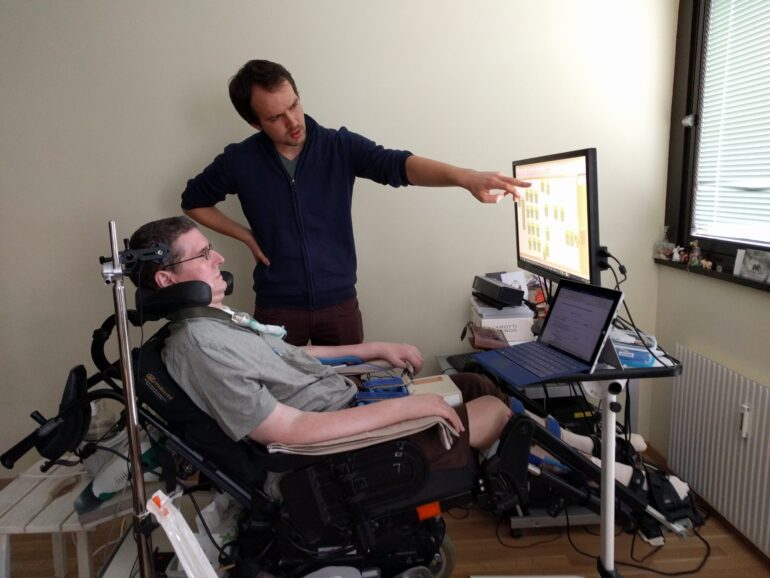TL;DR:
- Researchers introduce a groundbreaking algorithm for ALS survival prediction.
- The algorithm uses clinical and MRI data to offer personalized survival estimates.
- ALS is a rapidly progressing neurodegenerative disease with varying survival times.
- Current models have limitations and provide generic survival probabilities.
- The AI model achieves impressive accuracy, with predictions tailored to each patient.
- This development empowers patients and clinicians to plan better care.
Main AI News:
In a groundbreaking study published in Scientific Reports, researchers have unveiled an algorithm capable of generating personalized survival predictions for individuals afflicted with amyotrophic lateral sclerosis (ALS). This innovative algorithm, which harnesses clinical and MRI data, holds the potential to revolutionize the way patients and healthcare providers plan and implement treatment strategies.
ALS, a relentless neurodegenerative ailment characterized by progressive muscle weakness and atrophy, primarily affects the crucial muscles required for basic bodily functions such as mobility, speech, and breathing. Tragically, the leading cause of mortality in ALS patients is respiratory failure.
While therapies have been developed to slow the disease’s progression, the average life expectancy for ALS patients following the onset of symptoms hovers around 2-5 years. However, this timeframe varies widely, with some patients surviving for just a few months while others defy the odds and live beyond a decade.
This substantial variability in survival times poses a significant challenge for clinicians, rendering it nearly impossible to provide precise counseling for advance care planning or select patients with specific survival characteristics for drug trials.
Addressing this pressing need for more accurate survival predictions in ALS, the researchers embarked on a mission to develop a personalized prediction model. This model aims to estimate the time until a patient experiences respiratory failure, a crucial indicator of survival, by leveraging clinical and MRI data.
Employing the power of machine learning, the algorithm meticulously analyzed a vast dataset encompassing 172 patients participating in the Canadian ALS Neuroimaging Consortium’s long-term MRI-based study. The patients, with an average age of 59.7, had experienced symptoms for slightly over two years on average.
The algorithm took into account an impressive array of 114 clinical features, including disability level, cognitive function, disease duration, age, and gender, among others. It also considered 68 MRI features associated with the thickness of the brain’s cortex, a measure of brain tissue wasting.
This comprehensive dataset spanned from the patient’s enrollment in the study until either their demise or their last follow-up appointment. Notably, 72% of patients (95 out of 172) had experienced a documented composite respiratory failure event, defined as death, prolonged use of noninvasive ventilation exceeding 23 hours daily, or the necessity of a breathing tube.
From this wealth of information, the SuperLearner algorithm adeptly selected an individual survival distribution (ISD) for each patient under evaluation. The ISD offers personalized survival probabilities at various time points.
The researchers emphasize the profound advantage of their learned model: it delivers a personalized prediction tailored to each patient’s unique circumstances, rather than offering a mere average survival estimate for all ALS patients.
Crucially, the algorithm demonstrated impressive accuracy rates, achieving 77% accuracy for one-year survival, 57% for two years, and a remarkable 85% for three years. To illustrate its efficacy, the researchers showcased the predicted survival curve for Patient A, which estimated a survival duration of 40.4 months (slightly under 3.5 years). Astonishingly, the patient passed away after 42.8 months. Similarly, a patient with a predicted survival of 8.3 months succumbed after 1.5 months.
One notable strength of this machine learning model lies in its ability to incorporate data from both uncensored instances, where patients reached respiratory failure, and censored instances, where data collection ceased before that outcome occurred. This approach guards against bias, as patients experiencing early events are less likely to be censored.
Ultimately, this groundbreaking study paves the way for more informed decisions in ALS patient care, equipping both patients and healthcare providers with valuable insights into the timing of composite respiratory failure—a crucial factor influencing future treatment and care choices.
Conclusion:
This breakthrough AI algorithm for predicting ALS survival represents a significant advancement in the healthcare market. Offering personalized and accurate survival estimates equips both patients and healthcare providers with essential insights for tailored care planning and decision-making. This innovation has the potential to improve the overall quality of life for ALS patients and streamline the allocation of resources in the healthcare sector.

